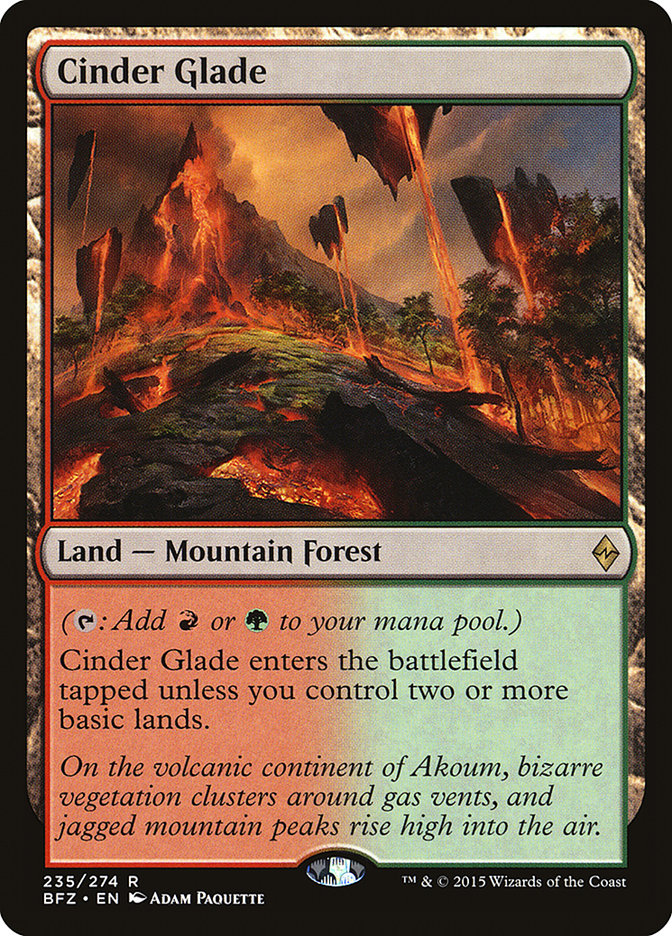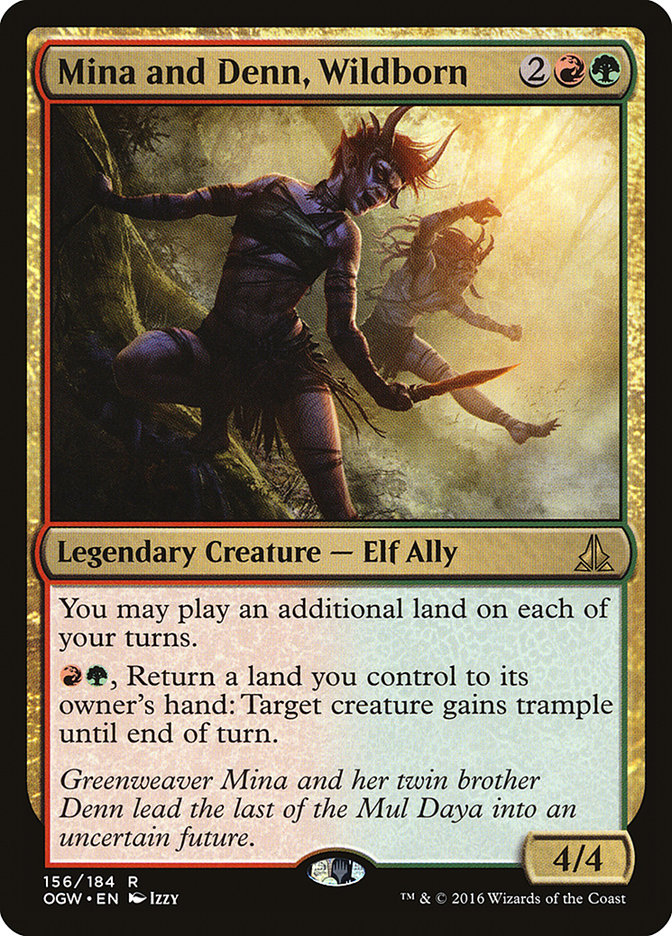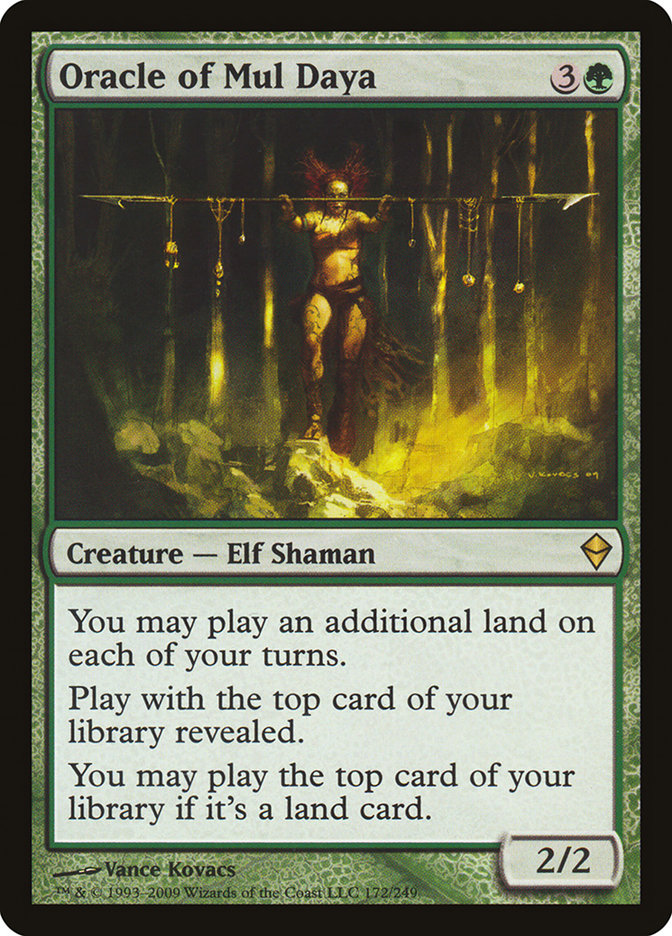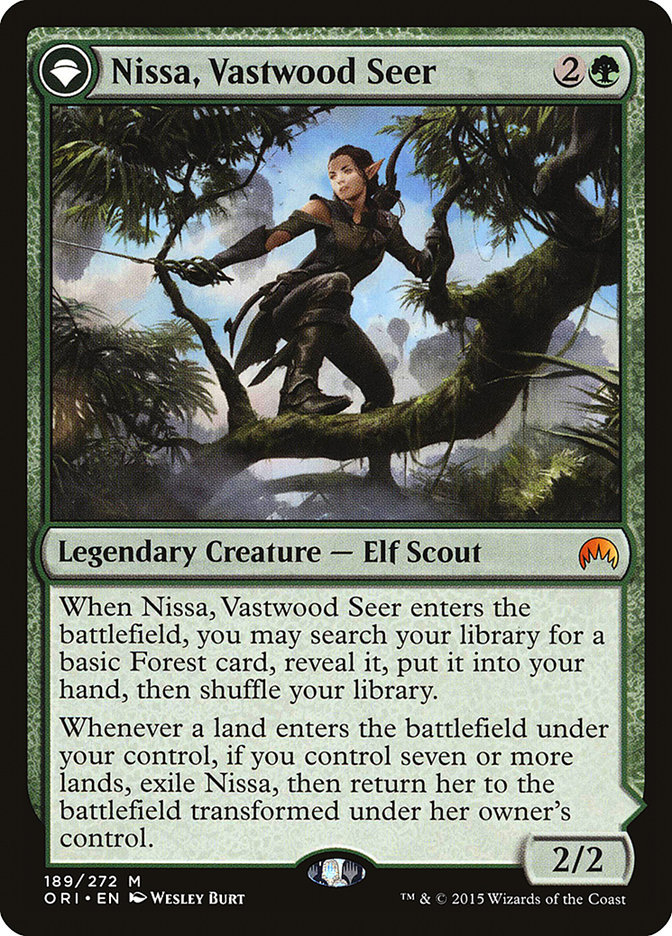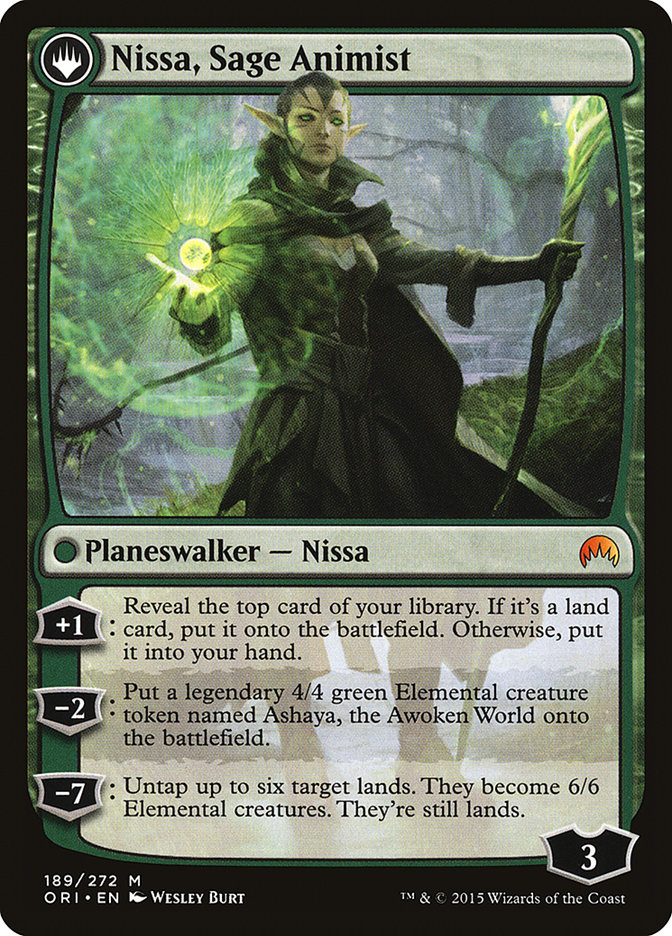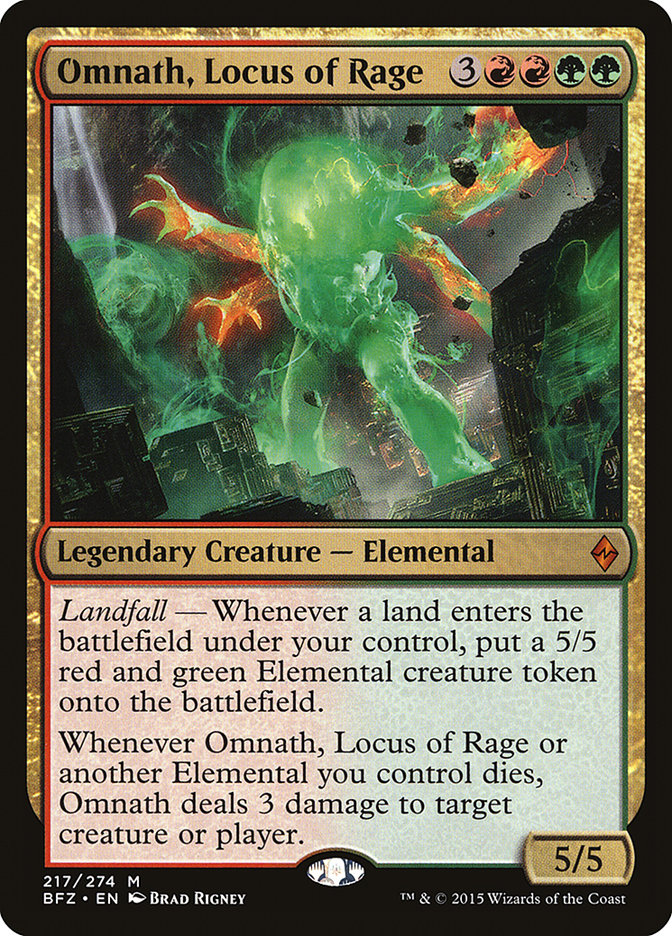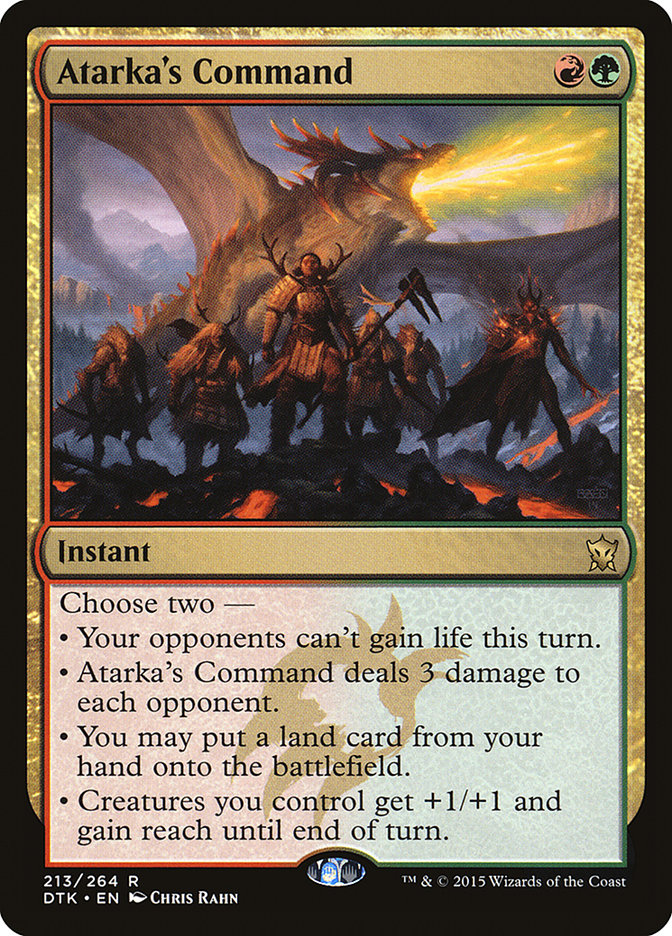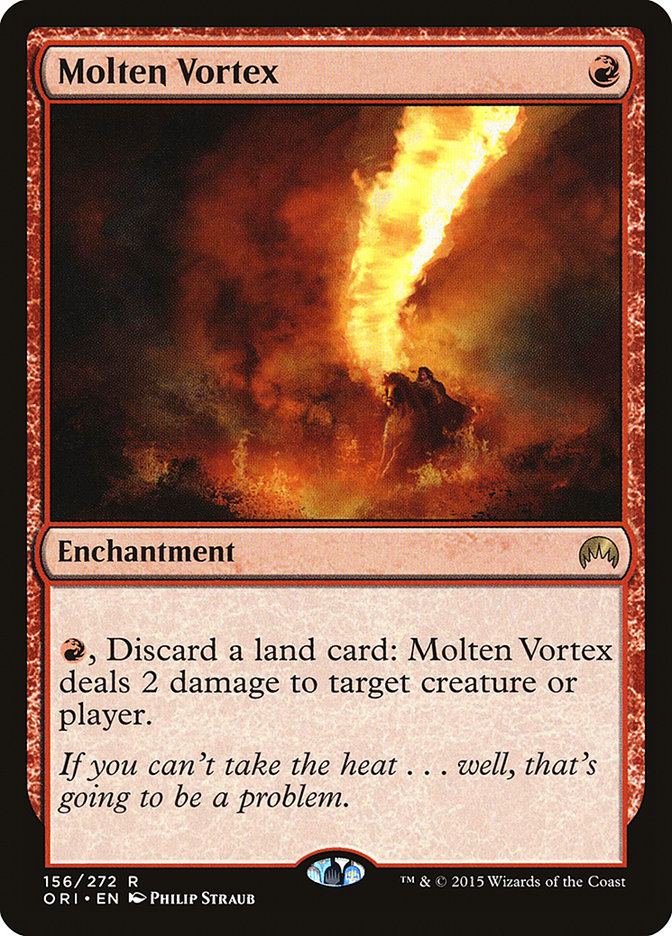 Mask to not be Cable to detect such an Eternally Spotless sign.
Mask to not be Cable to detect such an Eternally Spotless sign.
A couple of weeks ago, I was patronizing a nearby big box retailer, grabbing supplies for the vicious snowacolypse headed our way, a process which, if you’re from my neck of the woods, involves inexplicably stocking up on bread and milk. As I walked to the register I noticed a single booster pack each of Oath of the Gatewatch and Battle for Zendikar, displayed in the impulse buy area near the cash registers (they know how to get me.) Despite this tempting offer, I decided to stick to my bread-milk casserole ingredients and walked on by.
I came back a few days later and, sure enough, the same two packs were hanging from the otherwise barren rack. Mmm, nope. Won’t take em.
Are you sure? Okay…
This past weekend, I was preparing for a second round of snow when, lo and behold, those same two booster packs were still there, untouched. Then my mind started to race. Does somebody magically know what’s in those two packs? Am I unknowingly looking at two packs that contain my twelfth Munda, Ambush Leader and seventh Drana’s Chosen? Or maybe these packs were set before me, two Expeditions humming from behind the cardboard blister pack and plastic wrapping. Or hey, maybe I could write about the rares in each pack, trying to make a deck with the two of them for this week’s article!
Oh, well, now it was for work. Easy choice. I mean, I want to do a good job, right?
Without deliberating for another moment, forsaking how much bread and milk those packs could otherwise buy, I shoved them in my basket and checked out, burning to know what treasures or trash was hidden within them. After getting to my car, I ripped them open.
Majestic, isn’t it?
Mina and Denn, Wildborn follow in a venerated bloodline of extra-land cards that have filled Magic’s history, though their clearest comparison is with Oracle of Mul Daya, a card printed in the original Zendikar block.
Originally used in a variety of ramp and landfall strategies, Oracle of Mul Daya has become a great Commander deck choice for green-heavy 100-card lists in the seven years since its release.
Oracle of Mul Daya combines the ability of Exploration with the chance to “draw” lands right off the top of your deck, much in the same way Courser of Kruphix did most recently. In both instances, this effect was immensely powerful, not only smoothing your draws in the late-game but also providing a huge leap forward in mana production and landfall triggers.
With such a solid pedigree, why does this legendary follow-up pale in comparison to its smaller-bodied ancestor?
First, Mina and Denn, Wildborn does not draw cards. Courser of Kruphix was well-sized and it effectively and passively drew its controller cards. The Oracle started this trend, but Mina and Denn can’t finish it. And it’s worse than that; because Mina and Denn, Wildborn does not create card advantage, you only have what land is left in your hands to actually leverage the legendary creature’s power. Second, while both existed in formats that contained landfall, landfall is a lot softer this time around; with the exception of Scythe Leopard, the vast majority of landfall permanents are higher-costed, more sensibly sized creatures and permanents, and the trigger is often much less impactful (see Makindi Sliderunner and Plated Geopede).
Higher mana costs means landfall is less likely, as you’ll need to play the lands to cast the landfall-triggering permanent, leaving fewer in hand to actually activate the trigger in a proactive way. While no one has outright said that Mina and Denn, Wildborn is a bad creature, the fact that almost no players play them is enough evidence.
Despite the passive panning of Magic’s playerbase, I do think Mina and Denn have a place in our Standard, and in these two decks, we’ll leverage one of each of the pair’s pair of abilities.
Mina and Denn let you play extra lands every turn. As you might expect from angry, allied Elves, they’ll do anything they can to help their cohorts defeat the Eldrazi, including scouting the lands they know like the back of their slight, willow hands. While not as complementary as Oracle of Mul Daya’s abilities, Mina and Denn bring more lands to the battlefield, and we can work with that.
For deck number one, let’s worry about getting as many lands onto the battlefield as possible.
Creatures (22)
- 4 Rattleclaw Mystic
- 1 Dragonlord Atarka
- 3 Nissa, Vastwood Seer
- 3 Omnath, Locus of Rage
- 3 Embodiment of Fury
- 1 Embodiment of Insight
- 3 Sylvan Advocate
- 4 Mina and Denn, Wildborn
Lands (19)
Spells (19)

Creatures
Rattleclaw Mystic, or any other mana creature that might fit here, seems redundant; however, when landfall matters, you want to use as few of your lands as lands as possible. The more ways that you can produce mana outside of your lands, the better chance you have to play your landfall triggers as a choice, not as a necessity for your curve. Mina and Denn, Wildborn is well-sized for combat, but it will also attract a lot of attention. For this deck, we need to not only have a steady stream of lands, but we need a consistent way to skip a turn in terms of mana production. That’s why we see four here.
Sylvan Advocate has found a good home in Abzan decks alongside Shambling Vent and in ramp decks with Explosive Vegetation propelling it to Tarmogoyf levels of efficiency. Here, though, it works alongside all our land animators, providing crippling power to your otherwise innocuous mana base.
Nissa, Vastwood Seer remains one of the strongest of the flip planeswalkers from Magic Origins, and here, she can keep your landfall fueled while easily flipping herself to incite more landfall. She’s a strong play at any point on the curve, and you’d be hard-pressed to find a situation where she’s not great to cast. In testing under similar situations, I’ve found three to be the right number. Unlike other flip planeswalkers, using her main planeswalker ability is a “must,” not a “may,” so having a Vastwood Seer out alongside Nissa, Sage Animist means that you should activate the latter’s +1 with care.
Enough about the small-timers. Let’s talk about the beaters! Omnath, Locus of Rage has a well-earned reputation thanks to its previous iteration, Omnath, Locus of Mana, often getting way out of hand. In this instance, we are able to aggressively cast this monster, potentially with enough land drops left to get an Elemental or two right away. Unless they’ve got an amazing battlefield or amazing luck, you’re not losing with a sudden fifteen power joining your side. Even if things go south, you’re doming them or their creatures for three a pop.
Bear in mind that Embodiment of Fury and Embodiment of Insight both produce Elementals and are themselves Elementals, providing the tribal synergy I always want in both Standard and Commander decks. Speaking of them, the Embodiments are strong Limited role-players, and with enough support, they are terrifying Constructed contenders. Finally, a singleton Dragonlord Atarka is sometimes just what you need to scorch an army of tokens into oblivion, and an 8/8 is itself enough to get the job done.
Spells
In the spell category, Atarka’s Command performs a special function: playing an extra land. The other modes can apply pressure, either by preventing an uncomfortable amount of lifegain from Sorin, Solemn Visitor’s +1 or Zulaport Cutthroat triggers, smacking a weakened planeswalker, or pumping an army of lands in combat. For just two mana, this seems hilariously unfair.
With our manabase, splashing black is easy, and Painful Truths and Murderous Cut are a concentration of some of that color’s most powerful effects. Painful Truths will often fill our hands with lands, but that’s a good thing. Murderous Cut takes all our fetchlands and converts them wholesale into the format’s most efficient removal spell. Retreat to Kazandu, with so much landfall, can gain you an impressive amount of life.
Twelve fetchlands can take their toll. If you’re healthy, you can push a Rattleclaw Mystic to competitive sizes instead. Seek the Horizon is a painless Painful Truths; lots of times, lands function as semi-spells, and you just want to fill your hand with ammo. This old reprint from Kamigawa Block finally has a place, albeit a small one!
The manabase is centered on getting as many landfall triggers as possible. Green and red are the primary colors, and two of our three fetchlands can access black. All of them can get Cinder Glade, and that will likely be your first and last search target.
In practice, this deck was assertive, being able to take a commanding battlefield position in a few short turns. It’s pretty resilient to removal, and because it has lots of ways to search up each color, it was consistent. Omnath, Locus of Rage. Why aren’t people playing this card? It may get dwarfed by Eldrazi, but this color-hungry Elemental is no slouch. The ability to cast it, followed by a fetchland, felt so great. I had no problem with three copies, which I initially thought might be a bit too optimistic. Retreat to Kazandu wasn’t great, but that was about my only complaint here; replacing it with a Pulse of Murasa might be the right step, as I’d often run out of land.
The above deck focuses on the first ability on Mina and Denn, Wildborn. The second ability, however, has the potential for more interesting synergies.
The more “spent” lands you can put in your hand, the more terrifying an enchantment like this can become. Let’s follow this path for a bit!
Creatures (14)
Lands (20)
Spells (25)

This deck shares a lot with the first list, but there are enough changes to hint at a different plan. Honored Hierarch and Scythe Leopard support an aggressive plan. Swell of Growth and Atarka’s Command can both be used to hack life points off early while getting more lands onto the battlefield for Mina and Denn to take over. Remembering that Mina and Denn, Wildborn’s ability grants trample, Undergrowth Champion looks way better as a way to painlessly help a creature desperately in need of evasion.
Painful Truths is more important when we’re looking for our one copy of each relevant Retreat or Molten Vortex. Similarly, Murderous Cut will have more discarded cards to eat up. Molten Vortex is easier to find than normal thanks to a bevy of fetches. While potentially prohibitive with its heavy red requirement, the idea is to return your Forests and non-red producers to feed the Vortex.
This one also felt powerful, but it was less consistent in the early game. Later on, it had more angles to close the game than the first list, thanks to the Retreats and Molten Vortex. Despite their importance with this plan, three copies of Mina and Denn and Molten Vortex felt perfectly fine, as they were more likely to expend resources sooner to kill off the one-drops.
Both decks were strong, despite the difference in their lines. Take this as a sign, though; Mina and Denn make a great team. Both of their abilities are enticing. In what ways have you used the duo in Standard, and have you jumped into Modern or Commander with this exciting pair?


